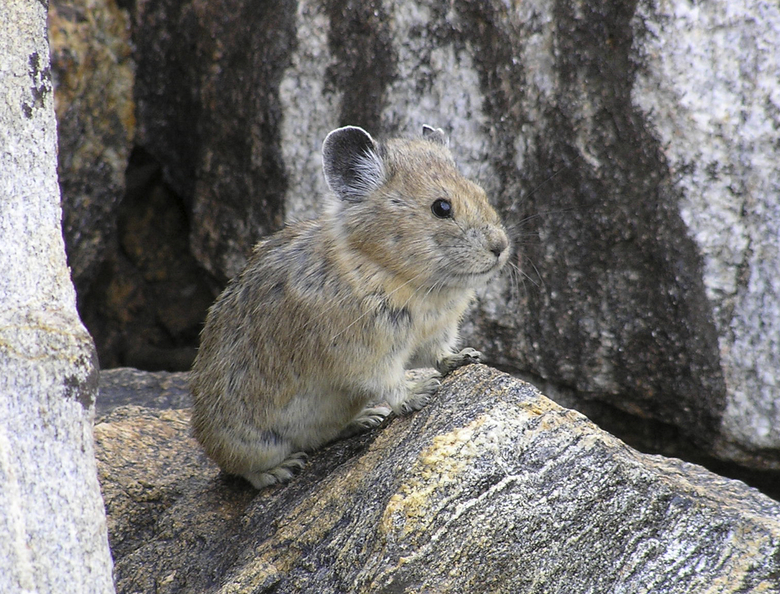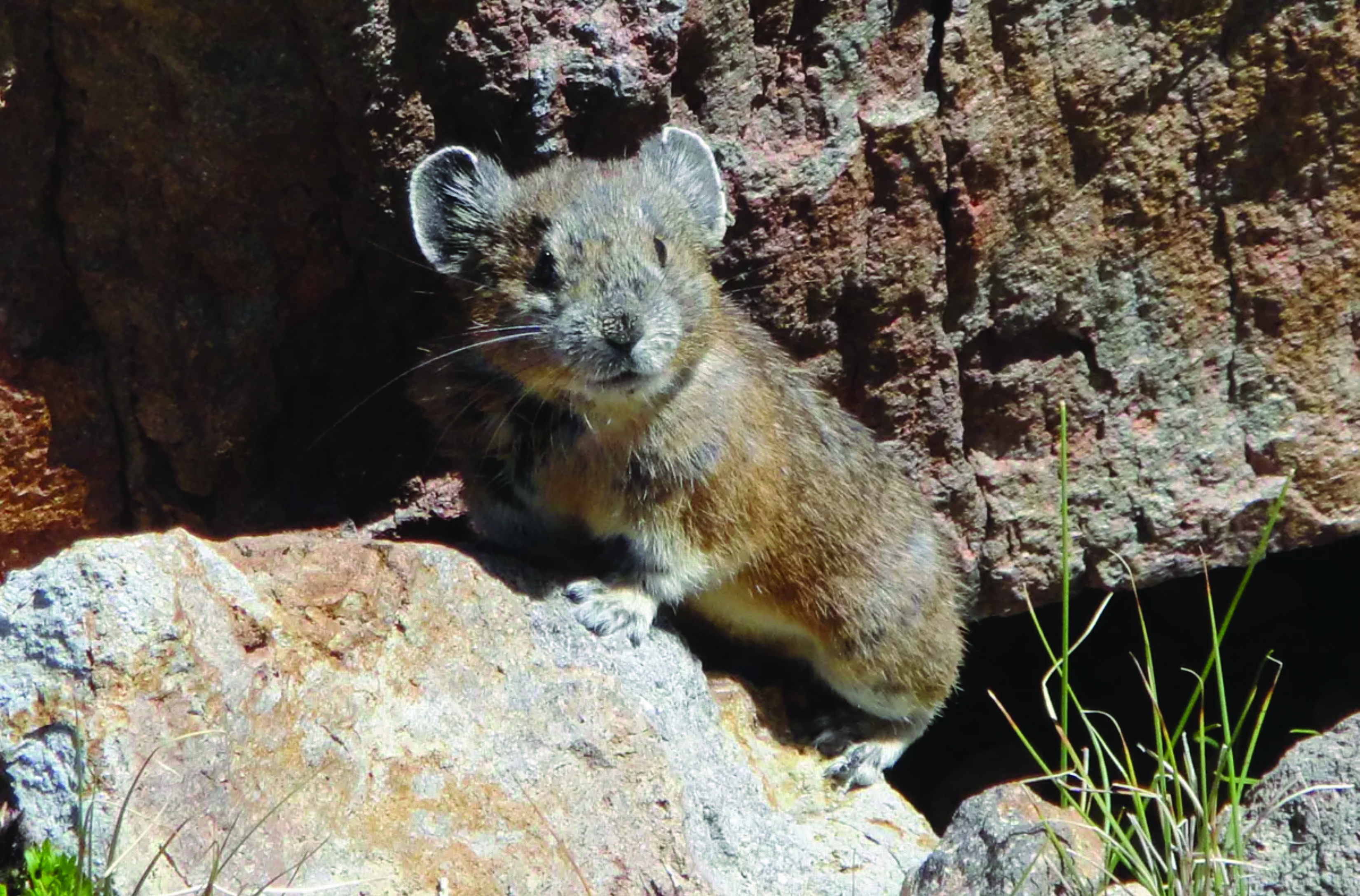American pikas are small chinchilla-like mammals, related to rabbits and hares. They are one of thirty species of the genus Ochotona, also known as rock rabbits or conies, found in Eastern Europe, the steppes and mountains of Asia, and western North America. As of 2010, staff at Western units of the National Park Service, including Crater Lake National Park, are conducting studies of pika ecology, behavior, and distribution, to determine if pika habitat is declining due to global climate change.
Pikas inhabit talus and rocky outcrops of mountain slopes and are characterized by short limbs, a barely visible tail, and rounded ears. Adult American pikas average about 170 grams (6 ounces) in weight and 16 to 20 cm (about 6 to 8 in) in length. American pikas occur from central British Columbia south through the Rocky Mountains to New Mexico and in the Cascades and Sierra Mountains from Washington to southern California. In Oregon, populations also live near sea level, along the Columbia Gorge.
A major factor limiting distribution is temperature: they cannot tolerate temperatures above 25°C for more than a few hours. Most pikas at low latitudes inhabit high alpine settings above 2,500 meters (8,200 feet) elevation. In the Oregon Cascades, pikas inhabit lower elevations by using deep crevices as refuges from higher temperatures. Most pikas are diurnal, but at higher temperatures they may be active mainly in the morning and evening.
Pikas live about seven years. They mate in spring and produce one or two litters, depending on elevation. Gestation takes about thirty days and weaning an additional twenty-eight days. Most litters consist of two to five offspring. American pikas are asocial except during the breeding season.
Predators include numerous carnivores, including eagles, hawks, coyotes, foxes, martins, and weasels. Pikas feed on a wide variety of grasses, sedges, and other plants. In summer, they can be observed gathering and carrying plants in their mouths. They initially deposit soft green feces, but they ingest this for additional nutritional content, producing piles of small hard rounded pellets. Pikas do not hibernate during the winter, so they stockpile vegetation in the form of “haystacks” to dry near their dens. These are moved indoors for the winter and can be supplemented by lichens and mosses.
Haystacks provide a visual indication of pika territories and an opportunity for stealing food reserves by neighbors. Territorial calls are often heard by hikers. Both sexes give short, high-pitched “eeks” when disturbed by predators or intruding neighbors. In the spring, courting males give longer calls.
Biologists are concerned about the disappearance of pikas from numerous sites in the Great Basin. Beever and his associates (2003) reported the loss of seven out of twenty-five populations (28 percent) during the last century. The animals inhabit “islands” of cool microhabitats, making it difficult for them to migrate to other areas if food disappears or temperature increases.
Pikas are listed as species of Least Concern in the IUCN Red Book, and the U.S. Fish and Wildlife Service declined to list them for protection in 2010. The decision is controversial, however, and many environmentalists continue efforts to seek protection.
-
![]()
American Pika.
Courtesy Shana S. Weber, USGS, Princeton University via AP File
-
![]()
Map This on the Oregon History WayFinder
The Oregon History Wayfinder is an interactive map that identifies significant places, people, and events in Oregon history.
Further Reading
"Warming West threatens tiny mountain pika." Oregonian, April 4, 2009.
Csuti, Blair, A., Jon Kimerling, Thomas A. O’Neil, Margaret M. Shaughnessy, Eleanor P. Gaines, and Manuela M.P. Huso. Atlas of Oregon Wildlife. Distribution, Habitat, and Natural History. Corvallis: Oregon State University Press, 1997.
Orr, Robert T. The Little-Known Pika. New York: Macmillan Publishing Co., 1977.
Smith, Andrew T. and Marla L. Weston. "Ochotona princeps." Mammalian Species. American Society of Mammologists 352 (1990), 1-8.


